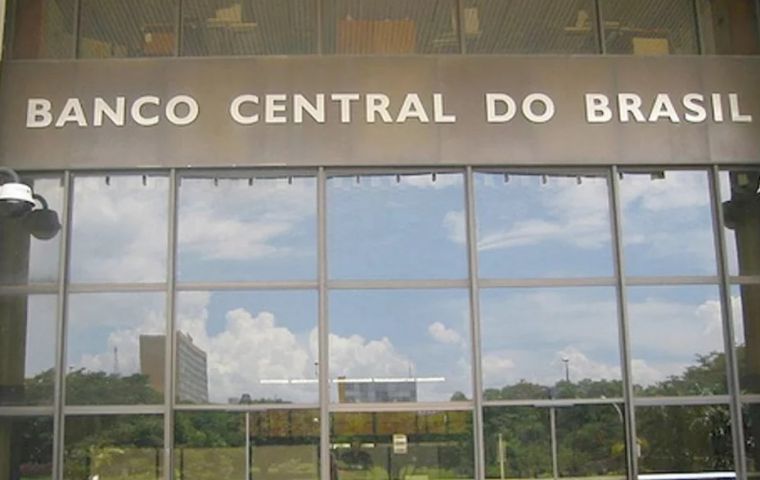MercoPress. South Atlantic News Agency
Brazil's inflation reported to be above target in first semester of 2025
 Galípolo said the Selic rate should remain high until it manages to push inflation within the target
Galípolo said the Selic rate should remain high until it manages to push inflation within the target Inflation figures released last week in Brazil showed the country had pierced the target ceiling for the first time since the National Monetary Council changed early this year the way the accumulated increase is calculated. Without this twitch, the inflation target had already been breached eight times.
The target set by the council for a 12-month time range is 3%, with a tolerance of plus/minus 1.5 percentage points. The ceiling, therefore, is 4.5 percent, and accumulated inflation should not exceed this level for six consecutive months.
As Brazil’s consumer price index IPCA—which is used to gauge the nation’s official inflation—stood at 0.24% in June, the sum of 5.35 percent over 12 months was the sixth consecutive rate above the 4.5% mark, with the following yoy recordings: January 4.56%; February 5.06%; March 5.48%; April 5.53%; May 5.32%; and June 5.35%.
In the price surge recorded in June for the 12-month period, the group of products and services that stood out the most was food and beverages—up 6.66%.
Established in 1999, the inflation targeting system worked until 2024, considering only the result for each year, from January to December. Thus, the target was only deemed to be breached if the IPCA surpassed the tolerance interval in December.
In 2023, the National Monetary Council determined that, from 2025 onwards, the target should be calculated following international standards, known as the “continuous target.” As such, the verification range moves over time and is no longer restricted to the month of December each year.
The council is made up of the ministers of Finance and Planning, as well as the president of the Central Bank, whose Monetary Policy Committee is tasked with managing IPCA’s calculation.
The use of the continuous target is said to prevent temporary variations in inflation from being labeled as noncompliance. Such is the case, for instance, when a shock in food or oil prices is observed, which causes inflation to fall outside the tolerance range for just a few months.
Whenever Brazil breaches the inflation target, the president of the Central Bank must publish an open letter to the Minister of Finance detailing the causes of the breach, the measures to be taken to pull inflation back, and when they should take effect.
In addition to the first half of 2025, inflation fell outside the tolerance range in 2001, 2002, 2003, 2015, 2017, 2021, 2022, and 2024. Only 2017 met the target, when the IPCA ended the year at 2.95%, below the 3% minimum target.
In 2002, when the target ceiling was 5.5 percent, the IPCA reached 12.53 percent—the highest since the implementation of the monetary regime. In 2021, the year with the effects of the pandemic, it reached 10.06 percent.
The inflation targeting regime outlines the set of procedures aimed at guaranteeing price stability in the country. “The target provides greater certainty about the direction of monetary policy, making the Central Bank’s commitment to price stability transparent to society,” the Central Bank explained.
If, on the one hand, the target sets a ceiling for price rises, on the other, it also determines that it should not be too low. Very low inflation or deflation (falling prices) can also be bad for the economy, since, if constant, it creates a vicious circle that drives away consumption (people may avoid making purchases in the expectation that prices will sink further down) and has a negative impact on economic growth and job creation.
The main way the Central Bank controls inflation is through the economy’s benchmark interest rate—the Selic. Raising the rate makes loans more expensive and slows down economic activity, which has the potential to contain price hikes. On the other hand, it discourages investment as well as the creation of jobs and income.
The Selic rate is set by the Central Bank’s Monetary Policy Committee at meetings held approximately every 45 days. The Selic is currently at 15% a year—the highest point on the upward trajectory that began in September 2024. Central Bank President Gabriel Galípolo has said that the Selic should remain high for a long time, until it manages to push inflation within the target. (Source: Agencia Brasil)




Top Comments
Disclaimer & comment rulesCommenting for this story is now closed.
If you have a Facebook account, become a fan and comment on our Facebook Page!